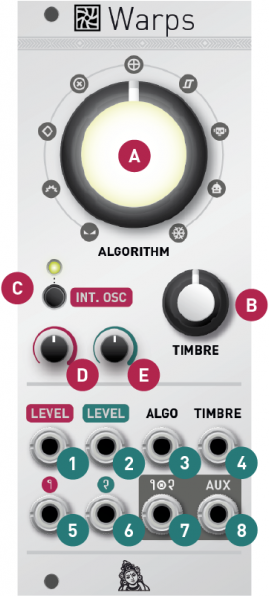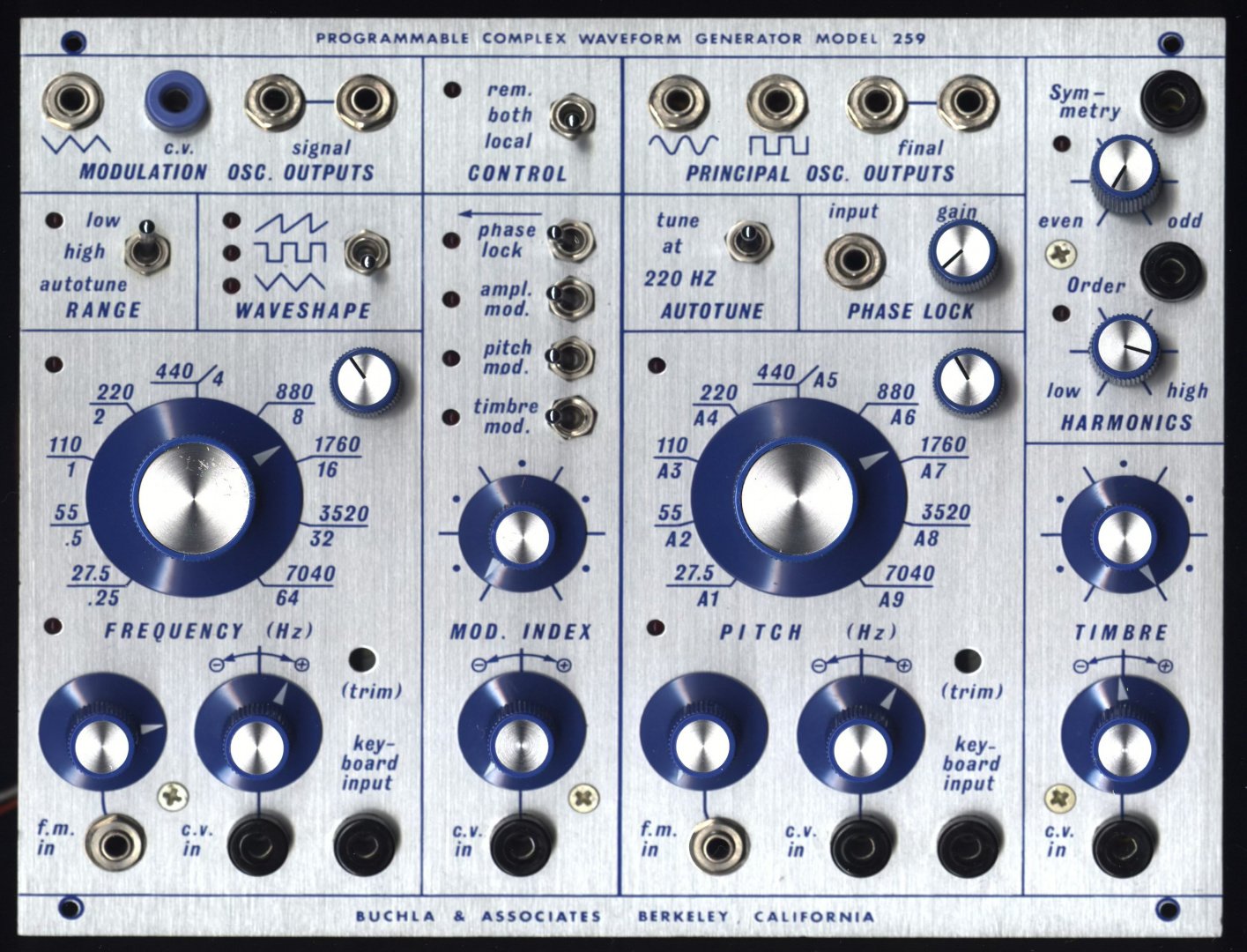Distortion Synthesis
In contrast to subtractive synthesis, where timbre is controlled by shaping the spectra of waveforms with many spectral components, distortion methods shape the sound by adding overtones with different non-linear operations - like typical distortion. Waveshaping and wavefolding are the two most common and widely used techniques, useful for creating harmonically rich and dynamically evolving timbres.
Waveshaping
Waveshaping applies a nonlinear transfer function to a waveform, transforming its harmonic structure. The resulting timbre depends on the transfer function and the amplitude of the input signal. Waveshaping can generate controlled harmonic spectra and is widely used in digital synthesis and computer music.
Early Example: Mutations (Jean-Claude Risset, 1969)
When working with early versions of the MUSIC software at Bell Labs, Risset developed nonlinear synthesis algorithms to explore continuously morphing spectra. In Mutations this allowed for smooth transitions between timbres and novel synthetic textures.
Quote:
“I created spectra that changed their shape in time... A kind of continuous metamorphosis of sound.” — Jean-Claude Risset (Roads, 1996)
Contemporary Example: Revsic (Richard Devine, 2018)
Composed with Eurorack modular synthesizers and multiple Nord G2 Modular units, Richard Devine's album SortLave makes heavy use of waveshaping. In Revsic this is audible as high-rate modulation of harmonic content, leading to harsh, metallic textures that evolve in time. Typical indicators for waveshaping are transitions from smooth waveforms to distorted, clipped shapes.
Quote:
"There are a lot of modular bits in here, where I was using feedback loops and nonlinear processing through analog and digital modules. I was especially interested in wave-shaping and the kind of gritty harmonic transformations that modular synths can provide." — Richard Devine, Synthtopia Interview, 2018
Notable Instruments
Doepfer A-136 Distortion/Waveshaper:

Analog Eurorack waveshaper and distortion module.
Independent control over positive/negative signal shaping.
Includes clipping, folding, amplification, and offset sections.
Mutable Instruments Warps:

Digital Eurorack module for meta-modulation and waveshaping.
Multiple shaping modes: diode clipping, wavefolding, rectification, XOR, etc.
Can interpolate ("morph") between shaping algorithms.
Wavefolding
Quasi parallel to Bob Moog, Don Buchla invented his own system of analog sound synthesis in the 1960s, based on distortion, modulation and additive principles. This approach is also entitled West Coast Synthesis - in contrast to Moog's East Coast Synthesis Wavefolding is a nonlinear technique where a signal is reflected (or "folded") once it exceeds a certain amplitude threshold. Instead of being clipped, the waveform bends back on itself, creating additional harmonics and a rich, complex spectrum.
Like in waveshaping, the input amplitude controls spectral richness, respectively the strength of overtones. Wavefolding creates boith harmonic and inharmonic overtones, while preserving dynamic responsiveness and musical expressiveness.
Early Example: Silver Apples of the Moon (Morton Subotnick, 1967)
One of the first electronic compositions using the Buchla 100 modular system.
Subotnick exploited wavefolding to generate organic, evolving tones that formed a new kind of expressive electronic music.
-
No keyboard interface—sound was shaped directly through control voltages and timbre modulation.
“I was more interested in composing timbre than pitch.” — Morton Subotnick (Holmes, 2020)
Subotnick's use of wavefolding anticipated later developments in timbre-driven composition and modular synthesis aesthetics. The Buchla 100 was released in 1965, and was used by Morton Subotnick for his 1967 experimental work Silver Apples of the Moon.
Contemporary Example: Tim Hecker
Tim Hecker integrates distortion-based synthesis in his textured, ambient soundworlds. While not always explicitly documented, his use of modular synthesizers (e.g., Make Noise, Buchla) suggests significant use of wavefolding and related techniques.
Key Work: *Love Streams* (2016)
Employs hardware and software synthesis for complex harmonic layering.
-
Wavefolding likely contributes to:
Dense, saturated harmonic fields.
Slowly shifting, unstable timbral motion.
Hecker's practice blends acoustic processing with modular sound design, pushing beyond traditional electronic genres.
Though not a technical demonstration, Hecker's work showcases how distortion-based synthesis can serve expressive, immersive purposes in contemporary music.
Notable Instruments
Serge Wave Multipliers:

One of the earliest analog wavefolder modules (~1974).
3 independent processors, including a classic wavefolder.
Dynamically processes input waveforms to produce new harmonically-related overtones.
Still produced today (by Random*Source).
Buchla 259 Complex Waveform Generator

Contains an internal wavefolder in the “Timbre” circuit
Paired with sine wave core oscillator to create harmonically rich content
Voltage-controllable folding amount
All-analog timbral circuitry to avoid digital aliasing
References
Holmes, T. (2020). Electronic and Experimental Music: Technology, Music, and Culture. Routledge.
Roads, C. (1996). The Computer Music Tutorial. MIT Press.
Synthtopia. (2018, Nov 2). Richard Devine Interview On Making His New Album SortLave. Retrieved from https://www.synthtopia.com/content/2018/11/02/richard-devine-interview-on-making-his-new-album-sortlave/
MOK. (n.d.). Richard Devine on Waveshaping with Waverazor. Retrieved from https://www.mok.com/artists.php
